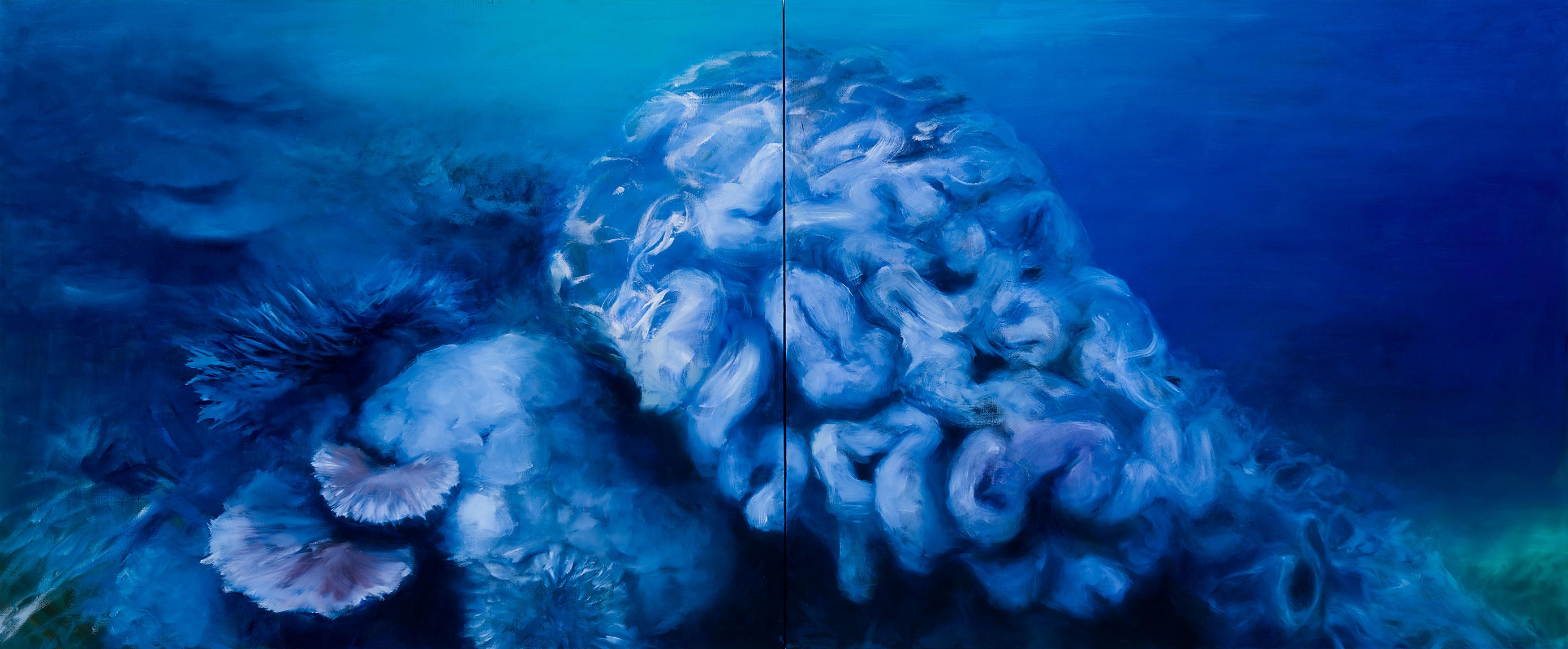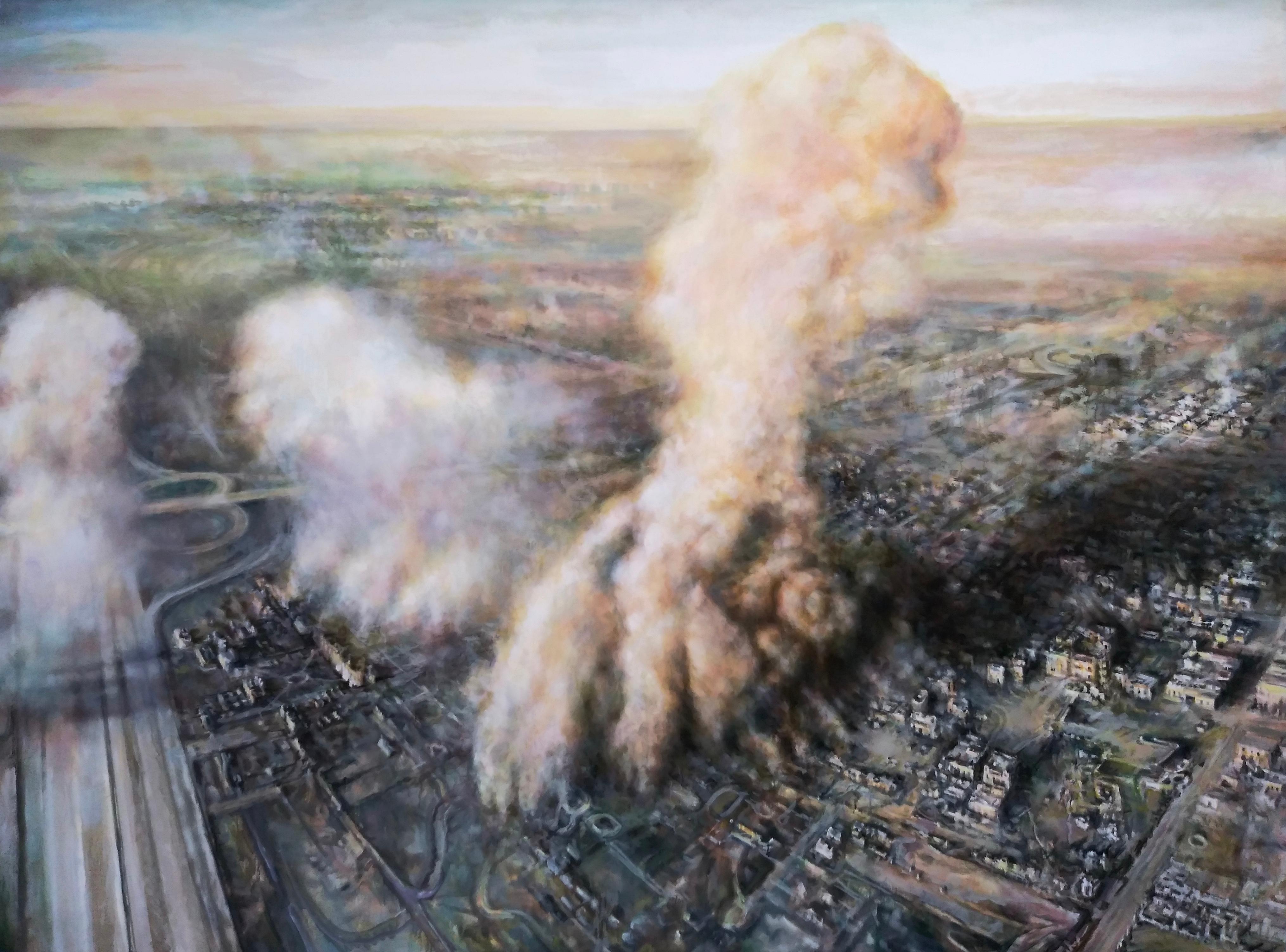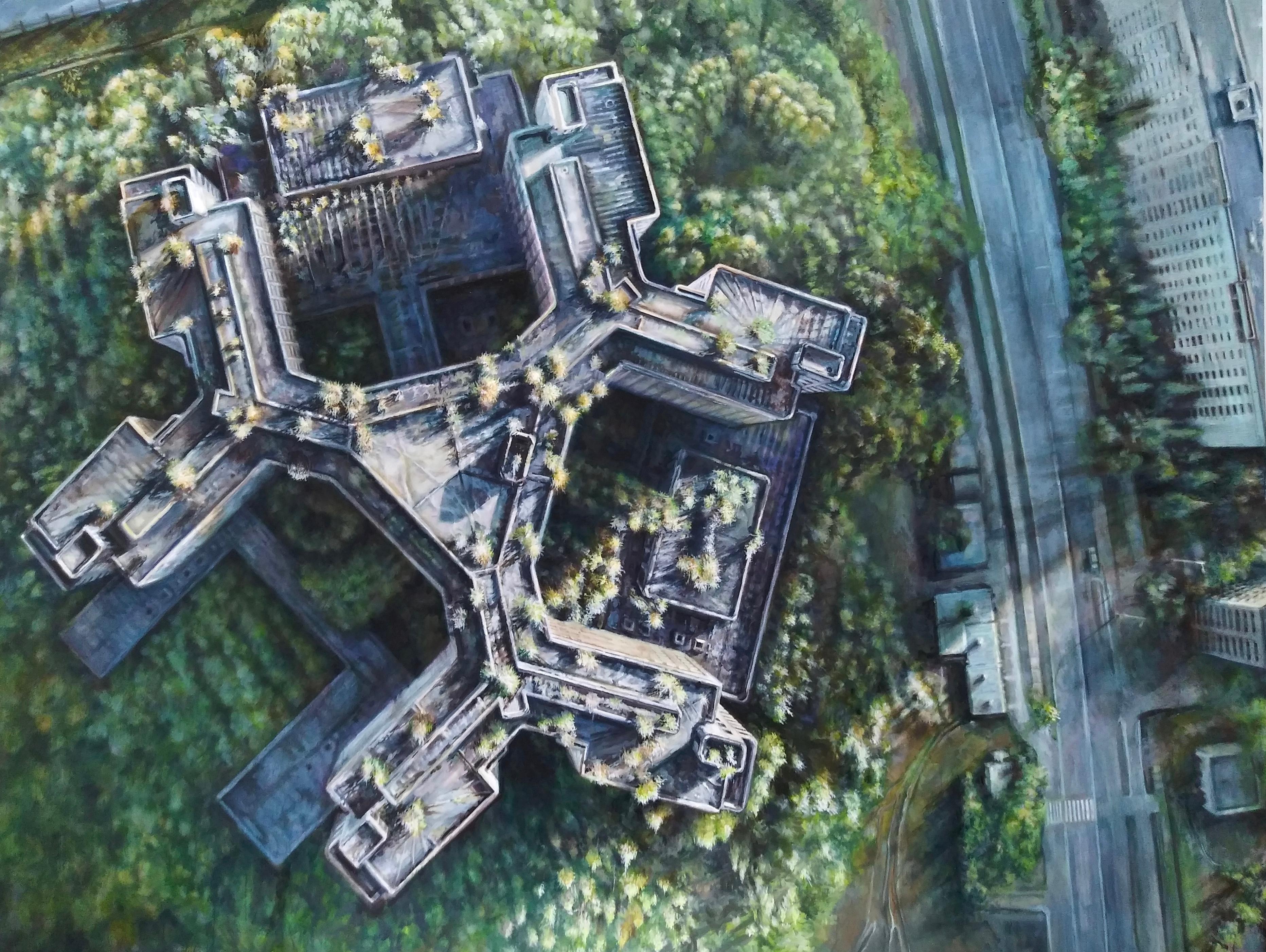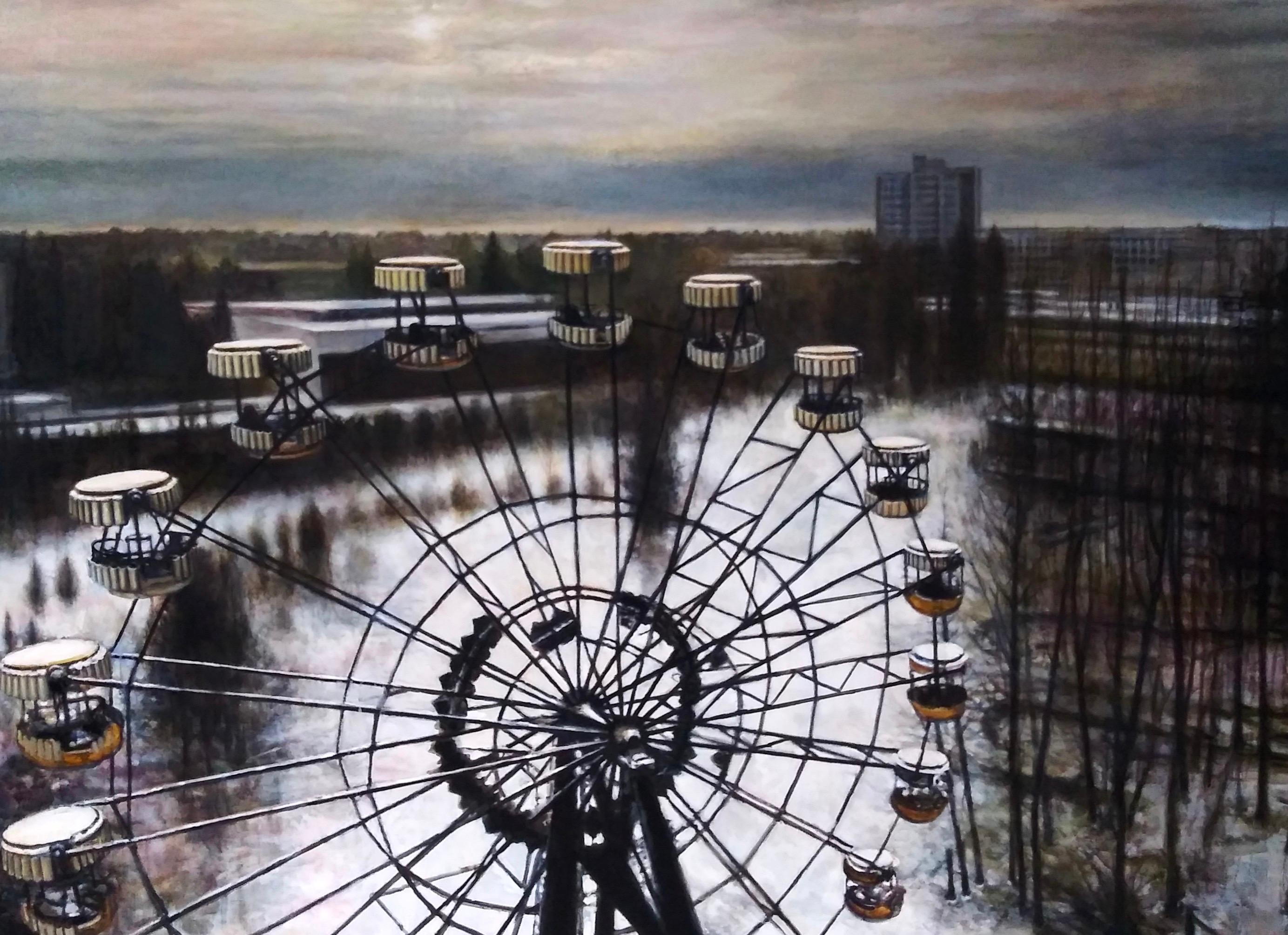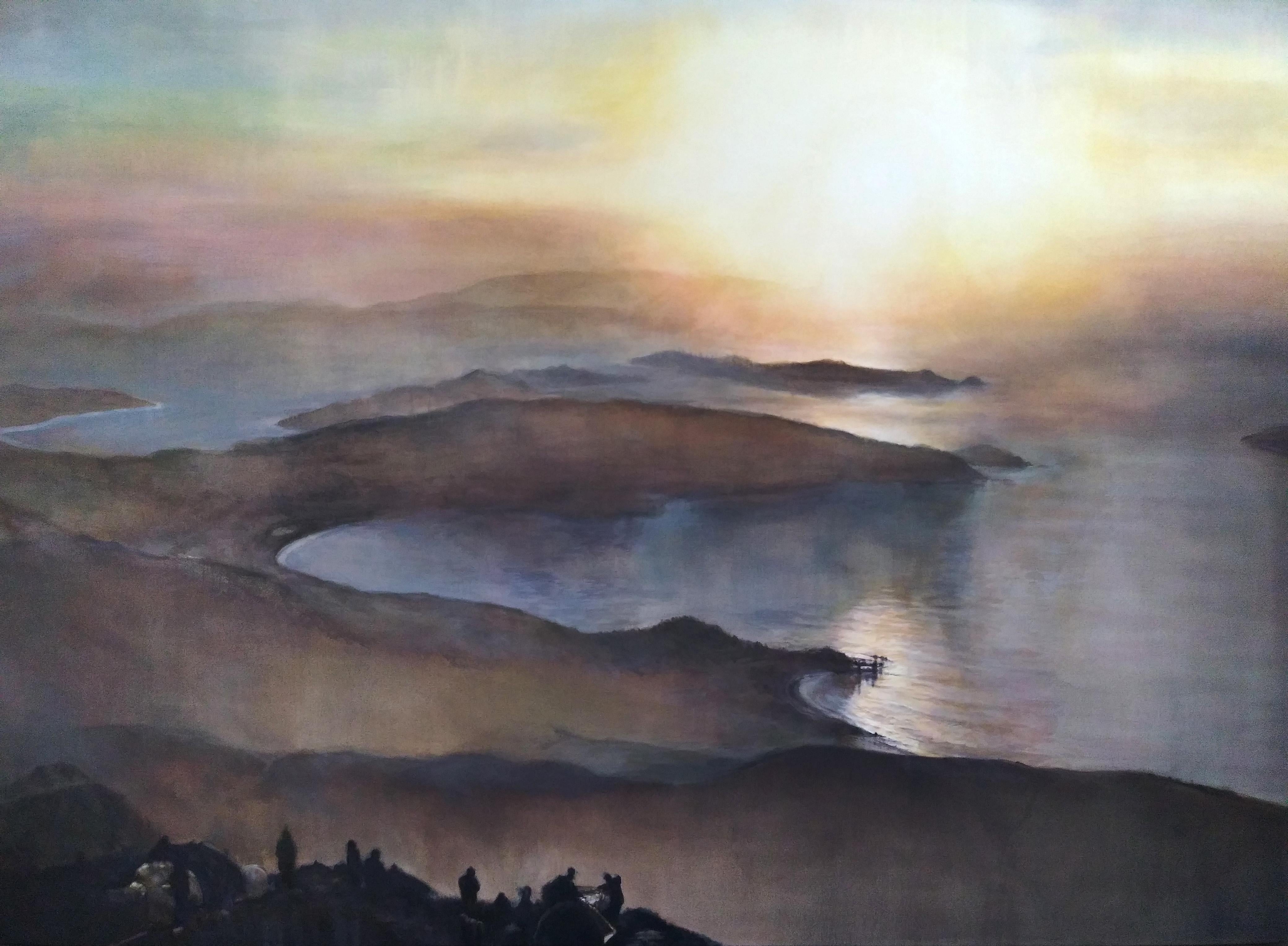Items Similar to "Montmartre Street Scene, Paris, France" Thomas Pradzynski, Architecture
Want more images or videos?
Request additional images or videos from the seller
1 of 7
Thomas Pradzynski"Montmartre Street Scene, Paris, France" Thomas Pradzynski, Architecture
About the Item
Thomas Pradzynski (1951 - 2007)
Montmartre Street Scene, Paris, France
Oil on canvas
16 x 32 inches
Signed lower right
At the age of 26 Thomas Pradzynski left his native Poland for Paris with the aspiration of becoming an artist. The year was 1977. Knowledge of architecture and a love of art were his main interests. His ideal was to "romanticize the empty streets and the traces of the past and to preserve places that are slowly disappearing." The path he laid before him was paved with warmly lit Parisian streets, dark windows and open doorways. The art he was about to create would not only echo his surroundings but also communicate his passion for their preservation.
The artist was born in Lodz, Poland, on November 29, 1951. His childhood was greatly influenced by his aunt Joanna, an artist in Krakow. Joanna recognized his talent and soon became his tutor. When he was nine, his family moved to the Montmartre district of Paris, where the city galvanized his creative spirit. The excitement of the modern city was like no other he had experienced. He was enamored by the freedom expressed by its inhabitants, most importantly, by the street painters with their brightly colored canvases. Upon returning to Poland in 1965, he resumed his artistic studies in painting and drawing.
Bowing to family demands that he pursues a more practical course in life, Thomas eventually took degrees in Sociology and Economics. In 1977 he exiled to Paris with his wife Joanna. Paris continues to inspire Pradzynski through its urban charm. The labyrinthine streets of Montmartre and the Latin Quarter have become his outdoor studios. Pradzynski's work explores and the streets of Paris like a solitary lover whom every window, doorway and cafe is filled with meaning. Much of Pradzynski's mood is created upon the stage of old Parisian buildings and storefronts. The actors become a window, two chairs, or a doorway whose interplay with light and shadow perform for the audience of our memories and dreams.
Throughout the 19th century and for half of the twentieth, Paris served as a beacon for artistic expression, drawing artists from all over Europe and the United States. Writers, painters, musicians and poets have all been inexorably drawn to this creative mecca. To name a few: Delacroix, Renoir, Toulouse-Lautrec, Picasso, Van Gogh, Edward Hopper, Camus, Sartre and Hemingway. Within the confines of smoky cafes, Pradzynski found the creative atmosphere conductive to his own inspirations. Much like his contemporaries, Pradzynski's inspirations turned into though provoking creations.
The street scenes portrayed in Pradzynski's paintings appear to be within the category of "realism." The term "realism," however, is as varied as the individual. The Realist artists discover that their external reality is inescapable from their own subjectivity. The depiction of a scene is primarily interpreted by the artist and secondarily interpreted by the viewer. Through this dual interpretation the artist is able to achieve a shared experience from an otherwise personal environment. As a realist, Pradzynski focuses his composition on the amount of content he can add to the subject matter. In order to reveal more than one would ordinarily see with the naked eye, Pradzynski utilizes his talents of "photo realism." The canvas ultimately contains more subject matter than the eye would normally perceive, therefore taking the perspective of a camera. Details in the painting provide the viewer with a sense of intimacy by bringing the subject within the range of public scrutiny.
The Realist painters of the 19th century were initiated in France by Gustave Courbet, who believed that "painting is an essentially concrete art, and can consist only of the representation of things both real and existing." Although Pradzynski maintains close tradition with Courbet in style, in theme he is more closely related to Edouard Manet. Manet believed that realism in technique could be mixed with myth in subject matter. Pradzynski's painted buildings are not entirely true to their Parisian location and in their assemblage become fictional. Manet's definition of Realism would still include Pradzynski's fictitious arrangement of subject matter since his style remains true to life. This theme of "fictitious Realism" found its way to the 20th century and onto the canvases of contemporary artists. What makes Pradzynski's work distinct, is the psychological introspection that elevates it from mere reportage to poetry. Although one is tempted to react first to the work with a sense of nostalgia, one quickly realizes that this is not the emotional key with which to unlock meaning and beauty.
In both mood and method Pradzynski bears close relation to the great American artist Edward Hopper. Where Hopper's painting embrace unique interplay of light to isolate his subject, Pradzynski's light is softer and the subjects are more intimate. With Hopper, the viewer in an intruder on the scene, an uneasy voyeur of uncomfortable truths, while
Pradzynski allows the viewer to participate in the scene. Similar to the mood of Padzynski's street scenes. Hopper's still cross sections of the city life portray a mood suspended in time. Both artists use similar forms of Realism to record a memory of relevance in their own lives. The similarity of content in their street scene is notable: vacant streets, open windows, and the warmly lit presence of inhabitants within decorated storefronts. In Pradzynski's paintings, Paris is viewed in perspectives that are devoid of people. This requires one to place himself at he scene and to explore an inner reaction; a technique also used by Hopper. The space created between the viewer and the scene in Pradzynski's paintings allows a pedestrian perspective to develop. Although their portrayals are of separate cities, the Realistic method complimented by a somber mood are threads common in both the paintings of Thomas Pradzynski and Edward Hopper. Pradzynski's use of light is comparable to Realist Richard Chiriani, who describes his subject matter's form through light and shadow. Not unlike Chiriani's paintings of aquatic life, Pradzynski's wandering shadows compliment his details with abstract shapes and take the viewer's imagination inside the quiet buildings where life takes form. As seen in the work of both artists, light is applied with a sensitivity that renders a subdued ambiance while embracing elements of expectation.
Feelings of anticipation are stirred upon viewing the white chair in "Le Cafe," and the bicycle in "Une Bicyclette a Florence." In a seemingly static environment these objects take on a life of their own; catalysts capable of initiating action at any moment, provoking the feeling that someone may occupy the chair or ride the bicycle away. Metaphorically, they act as a human presence, an abstraction of Pradzynski's own persona. Often Pradzynski paints more than one central scene, allowing the viewer an opportunity to view not only the immediate urban environment, but also to venture into the more intimate vignettes within the work. By carefully controlling his use of vanishing perspectives, Pradzynski creates a rhythmic transition between the multiple scenes. In "Le Cafe," a dark and intimate passage lures the viewer to explore both the private inner garden of sunlit trees and the colorful frontal shops. They are surveyed with equal interest and curiosity. The realistic detail used in Pradzynski's paintings reveals vulnerability on the buildings' surface while their solidity of design reassures us of their permanence. The buildings encompass their own dignity as well as reflecting a humble endurance toward time. Abstract shapes formed upon the building's stone surface in "Une Bicyclette a Florence" create the layered appearance of antiquity, a style comparable to that of earlier realists like Maurice Utrillo.
Pradzynski's architectural forms, while remaining classic in design, create mysterious shadows as well as secret passageways. The effect of light is naturalistic as well as allegorical. The shadows give the natural feel of depth and contour, while they romantically embrace each building as if to preserve its most intimate details. Pradzynski's light further acts to convey the meaning of continuous time and can best be analyzed in "Twilight on Rue de Madrian." Light coming from different angles reflecting upon the damp streets and weathered facades creates alternate perspectives. Thus, light seems to have more of a symbolic connotation rather than a naturalistic presence. The artist has created a prismatic collage of time itself.
Nostalgia informs much of Pradzynski's work. It is a feeling he searches out in the deserted streets, a mood he discovers in an image reflected off a window or in a building's crumbling facade. Whether it is empty street, the riderless bicycle propped against a wall, an unattended table in a small cafe, his images reveal the impulse in us
all to hold tight to traces of the past, while the occasional open doorway lends the imagery mystery and suggests a future, inevitable yet unknown.
No simple interpretation of Thomas' work is either fitting or rewarding. His great popularity is due, at least in part, to the accessibility of his imagery. Pradzynski's work is readable yet psychologically and emotionally complex.
Thomas Pradzynski has successfully laid claim to a re-imagined Paris, one completely his own. Its streets are empty but the complex experience of human emotion has not deserted them. His city is a unique configuration of dream and remembrance; mystery and anticipation. He has transformed the alleyways, cafes and open doorways into metaphor.
Pradzynski's Paris is nothing less than a hauntingly evocative street map of our own emotions.
- Creator:
- Dimensions:Height: 20 in (50.8 cm)Width: 36 in (91.44 cm)
- Medium:
- Movement & Style:
- Period:
- Condition:
- Gallery Location:New York, NY
- Reference Number:1stDibs: LU184129919912
About the Seller
5.0
Platinum Seller
These expertly vetted sellers are 1stDibs' most experienced sellers and are rated highest by our customers.
Established in 2021
1stDibs seller since 2022
62 sales on 1stDibs
Typical response time: 1 hour
- ShippingRetrieving quote...Ships From: New York, NY
- Return PolicyA return for this item may be initiated within 3 days of delivery.
More From This SellerView All
- "Tuesday - 8 O'clock, " Frank Boros, View of Manhattan Skyline, New York CityLocated in New York, NYFrank J. Boros (1943 - 2017) Tuesday - 8 O'clock Oil on canvas 48 x 51 inches Signed lower right Accompanied by original purchase invoice and letter from the artist. Provenance: T...Category
1990s Contemporary Landscape Paintings
MaterialsCanvas, Oil
- "Brooklyn Bridge, New York City, " Foggy Day with Boats, Cityscape, East RiverBy Henry BensonLocated in New York, NYHenry Benson (1930 - 1998) Brooklyn Bridge, East River, 1971 Acrylic on canvas 34 x 28 inches Signed upper left corner: Henry Benson Provenance: Golden Door Gallery, New Hope, Penns...Category
1970s Contemporary Landscape Paintings
MaterialsAcrylic, Canvas
- "Gwine to Eat it All Myself" William Holbrook Beard, Bears, Animals, Genre SceneLocated in New York, NYWilliam Holbrook Beard Gwine to Eat it All Myself, 1894 Signed and dated lower left Oil on canvas 16 x 24 inches Provenance: Childs Gallery, Boston Cynthia Bowers, New York Estate of the above Exhibited: New York, National Academy of Design, 1895, no. 405 ($500). Literature: American Art Review, January - February, 1975, p. 36, illustrated. Abraham A. Davidson, The Eccentrics and Other American Visionary Painters, Boston, 1978, p. xvii. Born in Painesville, Ohio, William Beard...Category
1890s Animal Paintings
MaterialsCanvas, Oil
- "Pueblo Indians, Taos, New Mexico, " Georgia Klitgaard, Southwest LandscapeBy Georgina KlitgaardLocated in New York, NYGeorgina Klitgaard Pueblo Indians, Taos, New Mexico Signed lower right Oil on canvas 18 x 24 inches Georgina Berrian was born in Spuyten Duyvil, New York in 1893. She was educated a...Category
Mid-20th Century Modern Landscape Paintings
MaterialsCanvas, Oil
- "Tully Lumber Mill, Orange, Massachusetts, " Dorothy Eaton, WPA Factory RuralLocated in New York, NYDorothy Eaton Tully Lumber Mill, Orange, Massachusetts, 1935 Signed and dated lower right Oil on canvas 17 1/2 x 23 1/2 inches Dorothy Eaton was born in East Orange, New Jersey in 1893. She studied at Smith College...Category
1930s American Realist Landscape Paintings
MaterialsCanvas, Oil
- "Lunch Break” Fletcher Martin, Men Working, Bricklayers, WPA, American SceneBy Fletcher MartinLocated in New York, NYFletcher Martin Lunch Break, circa 1940 Signed lower right Oil on canvas 31 1/2 x 37 3/8 inches When Fletcher Martin died in 1979, the New York Times entitled his obituary “Artist o...Category
1940s American Realist Landscape Paintings
MaterialsOil, Canvas
You May Also Like
- "Ebbing Reef" Corals, Large Scale Contemporary Seascape Oil Painting (deep blue)By Karen MarstonLocated in New York, NY60"x144" large scale painting, oil on canvas, created on two joined canvases. The deep blue palette gives a sense of underwater space in this grand depiction of coral reefs. Artist, Karen Marston presents this endangered species in a grand scale to show its beauty and importance to our environment. Karen Marston is a painter living and working in Brooklyn, NY. Her work has been seen in a number of solo exhibitions in New York City. In addition to her 2018 show Harbingers, at the Owen James Gallery in Soho, other recent solos include: 2017’s To Embrace the Whole Sky with the Mind, at Station Independent Projects on the Lower East Side, Demeter’s Wrath in 2016 at the Owen James Gallery and Storm Watch...Category
2010s Contemporary Landscape Paintings
MaterialsOil, Canvas
- Russian Drone Painting No. 3 (Damascus, 2015)By Lawrence GipeLocated in Santa Monica, CAWilliam Turner Gallery is proud to present a small solo exhibition of paintings by artist Lawrence Gipe called “Recent Pictures,” which draws fr...Category
2010s Contemporary Landscape Paintings
MaterialsOil, Canvas
- Russian Drone Painting No. 5 (Hong Kong, 2019 Pro-Democracy Protestors)By Lawrence GipeLocated in Santa Monica, CAWilliam Turner Gallery is proud to present a small solo exhibition of paintings by artist Lawrence Gipe called “Recent Pictures,” which draws fr...Category
2010s Contemporary Landscape Paintings
MaterialsCanvas, Oil
- Russian Drone Painting No. 1 (Mir Diamond Mine, Siberia)By Lawrence GipeLocated in Santa Monica, CAWilliam Turner Gallery is proud to present a small solo exhibition of paintings by artist Lawrence Gipe called “Recent Pictures,” which draws fr...Category
2010s Contemporary Landscape Paintings
MaterialsCanvas, Oil
- Russian Drone Painting No. 4 (Abandoned Hospital, Moscow)By Lawrence GipeLocated in Santa Monica, CAWilliam Turner Gallery is proud to present a small solo exhibition of paintings by artist Lawrence Gipe called “Recent Pictures,” which draws fr...Category
2010s Contemporary Landscape Paintings
MaterialsCanvas, Oil
- Russian Drone Painting No. 6 (Ferris Wheel at Pripyat, 2016)By Lawrence GipeLocated in Santa Monica, CAWilliam Turner Gallery is proud to present a small solo exhibition of paintings by artist Lawrence Gipe called “Recent Pictures,” which draws fr...Category
2010s Contemporary Landscape Paintings
MaterialsCanvas, Oil
Recently Viewed
View AllMore Ways To Browse
Paris Architecture
Thomas Vintage
Paris Shop
Vintage Love Paris
Space Age Architecture
Architectural Cross
Paris Vintage Shops
Paris Vintage Shop
French Street Names
Vintage Architecture Photos
Shop Sign Street
French Quarter Art
Vintage French Quarter
Cafe Paris Vintage
Painting Of Paris Shops
French Quarter Painting
Painting Of French Quarter
French Cafe Scenes
